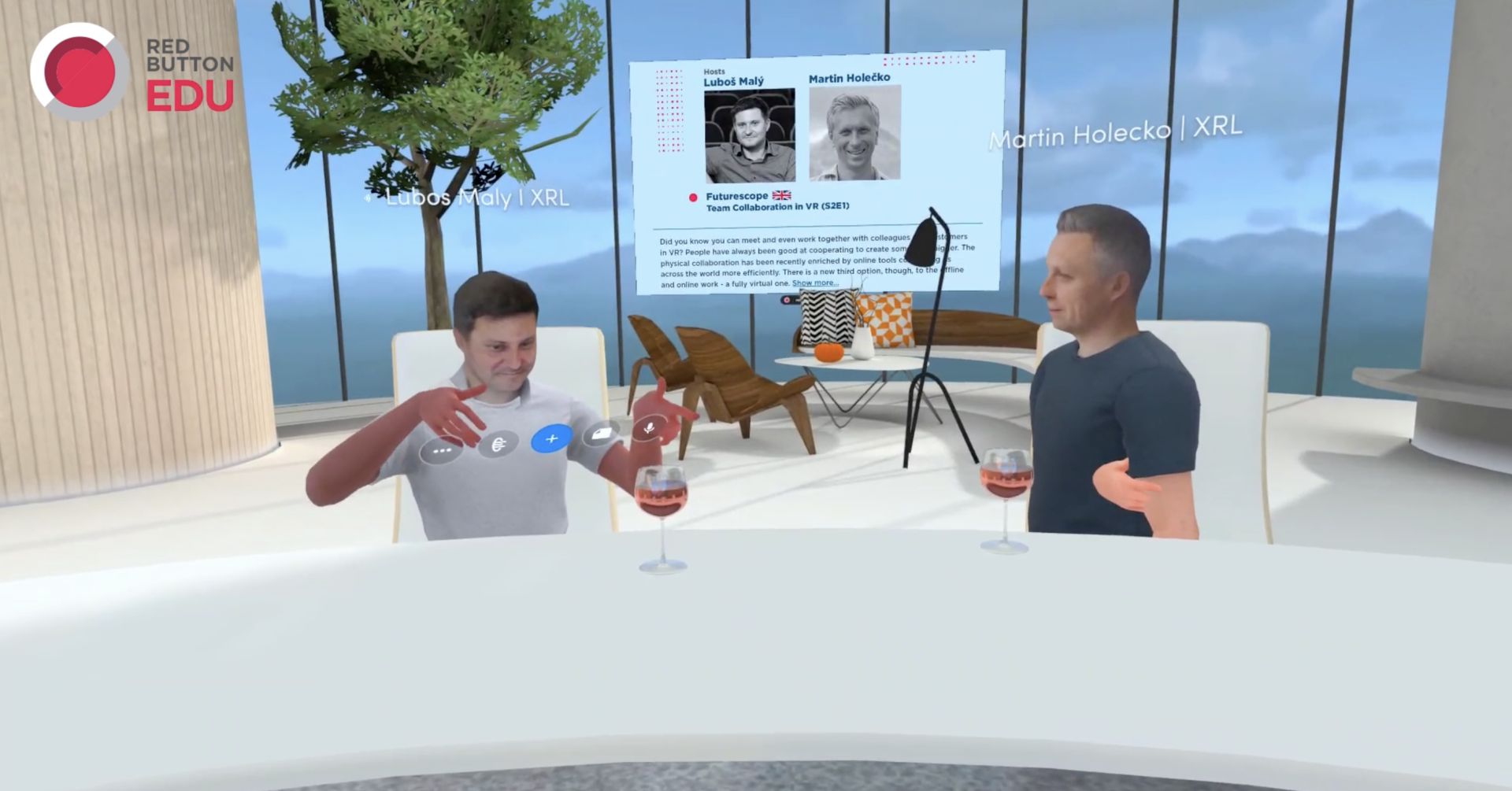VR Could Become Standard at Work, Luboš Malý Says
Why is it important to be part of the new digital age? How are VR and AI related? What is the future of VR? Learn the answers to these questions and more in this interview with Luboš Malý.
Why is it important to be part of the new digital age? How are VR and AI related? What is the future of VR? Learn the answers to these questions and more in this interview with Luboš Malý.
Making systems into ecosystems; organizations into organisms, employees into entrepreneurs, and hierarchies into communities. Luboš Malý currently focuses on start-ups, impressive projects, inspiring gatherings, and team and organizational consulting. As the head of innovation at LEGO Group, he began investigating how to accelerate technological innovation. Today, he implements his experience in projects such as in the Future Port Youth project or at XR Leaders and DNAi. He also co-founded the RedButton business network in the Czech Republic and continues to participate on its internal operations. He says he likes openness, to give rather than to take, and humility, humanity, and humour in all its forms. He also loves ZeroWaste and expert volunteerism.
You help companies on their journey into the new digital age. What does that mean specifically and how does your interest in VR fit with that work?
In recent years, digitalization has become a necessity for progressive companies because of factors such as customer demands, economic growth, and employee expectations. The advantage of digitalization is that it offers us new services and opportunities while reducing costs. Many companies have accepted digitalization and implemented modern technologies such as artificial intelligence. However, some companies are still paying off their digital debts. It’s interesting that both types of companies need internal changes and a person responsible for digitalization that can be called the office’s technical manager or head of implementation, which is a job that didn’t exist a few years ago. These are the people I work and communicate with. What I like about virtual reality is that it’s one of the few so-called exponential technologies that is tangible. Up until recently, it was hard to communicate a digital project because it was mostly just code. In virtual reality, you can have your partners and co-workers put on a headset and show them a whole new world that is completely different from what they normally experience. Many companies consider costs to be the biggest obstacle to implementing virtual reality.
Could you explain why it’s key to accept digitalization and VR?
I don’t think costs are the biggest problem. It’s more about insufficient information about VR’s capabilities and initial mistrust in this technology. People think it’s expensive because they don’t know what it offers and how fast the industry is developing. Furthermore, decision-makers often lack experience using it. Management must therefore be convinced of the solution and of the technology itself.
This is where the Virtuplex comes in. It offers a great opportunity to see the future in the present. It takes executives into their VR space where anyone can experience VR for themselves, overcome their doubts, and dispel the preconceived notions they may have about the technology. By displaying projects from other companies as inspiration, the Virtuplex convinces executives to see the potential for using VR in their company. I believe virtual reality could soon become standard in the workplace. Smartphones were also once considered expensive, but they also became daily tools, and the costs now seem marginal.
What’s your opinion of combining AI and VR? Will one be possible without the
other?
No exponential technology works on its own. It only works when connected. Take 3D printing. It will be interesting for the masses when people will be able to use generative models and create their own objects with the help of AI. Say I want a cup with a certain motif, my hand is this big, and I want to use it for hot drinks. AI then creates a model, and I send it to a 3D printer that I have in my living room, and I get what I need. It´s very much the same with VR. Virtual reality does not have to be revolutionary, because it primarily gives the opportunity to see something up close without unnecessary travel. However, new opportunities arise in combination with AI, such as simpler modelling of complex situations and contexts. Virtual reality can be used to operate equipment or to simulate emergency situations such as in a hospital’s intensive care unit. Employing AI makes it possible to learn and react faster in the virtual world, which increases the chances for the right reaction in a crisis. VR also creates a feeling of presence and immersion into the simulated environment, which improves the experience.

Is there anything that worries you about these developments?
The combination of VR and AI does present potential risks. Take creating digital people like the recent example of the digital Václav Havel. AI was used to help create a virtual representation of Havel using all his past speeches and written materials. That created the opportunity for a virtual meeting with Havel and to be able to ask him questions about politics or other topics.
Although these developments have potential positive and negative aspects, the combination of AI and VR offers a new world exceeding the boundaries of mere entertainment. I see uses in teaching and education in general where the emotional experience is very important and helps us remember all the information. The experience of using AI and VR is very intense, it expands our horizons, and I believe it presents a massive advancement for humanity.